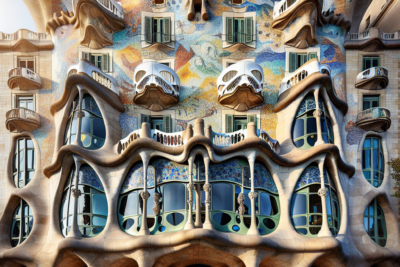
- The Architectural Marvel of Sagrada Familia: A Journey Through Gaudí's Vision
- Unraveling the Symbolism: What Each Facade of Sagrada Familia Represents
- Visiting Sagrada Familia: Tips for an Unforgettable Experience in Barcelona
- The History of Sagrada Familia: From Vision to Reality
- Artistic Elements of Sagrada Familia: Exploring Gaudí's Unique Style
- Sagrada Familia's Influence on Modern Architecture: A Lasting Legacy
Barcelona's Sagrada Familia stands as a testament to the genius of architect Antoni Gaudí, captivating millions with its intricate designs and towering spires. This iconic basilica, which has been under construction since 1882, blends Gothic and Art Nouveau styles, creating a unique architectural masterpiece that continues to inspire awe and wonder.
In this exploration, titled The Eleventh Wonder: Exploring Barcelona's Sagrada Familia, we delve into the history, artistry, and cultural significance of this monumental structure. From its elaborate facades to its stunning interior, the Sagrada Familia invites visitors on a journey through time and creativity, revealing the profound vision behind Gaudí's most ambitious work.
The Architectural Marvel of Sagrada Familia: A Journey Through Gaudí's Vision
The Sagrada Familia is not merely a building; it is a symbol of artistic innovation that embodies Antoni Gaudí's unique vision. Gaudí's approach to architecture was deeply influenced by nature, reflected in the structure's organic shapes and forms. The basilica showcases an intricate interplay of light and space, creating a serene atmosphere through its stained glass windows that transform sunlight into a kaleidoscope of colors.
At the heart of Gaudí's design lies a profound philosophical underpinning. The Sagrada Familia is structured around Christian symbolism, where each element conveys spiritual meaning. Visitors can explore various architectural features that highlight this connection, including:
- The Nativity Façade, which represents the birth of Christ
- The Passion Façade, illustrating the crucifixion
- The Glory Façade, depicting the resurrection
Furthermore, the Sagrada Familia is an excellent example of Gaudí's use of geometry. His innovative techniques, such as hyperbolic paraboloids and catenary arches, not only enhance the structural integrity but also contribute to the aesthetic beauty of the basilica. These design principles allow for a harmonious balance between strength and elegance, setting the Sagrada Familia apart from other architectural works of its time.
As construction continues, the Sagrada Familia remains a vibrant canvas of creativity, reflecting Gaudí's dream of a temple that would coexist with nature and spirituality. This architectural marvel stands as a testament to human endeavor and vision, inviting everyone to partake in its ongoing journey towards completion.
Unraveling the Symbolism: What Each Facade of Sagrada Familia Represents
The Sagrada Familia's facades are not just grand entrances; they are rich tapestries of symbolism and storytelling. Each facade reflects a distinct aspect of the Christian narrative, inviting visitors to ponder their deeper meanings. The interplay of light and shadow on these intricate designs emphasizes the spiritual journey that Gaudí envisioned, making each visit a unique experience of discovery.
The Nativity Façade stands as a celebration of life and creation, showcasing the birth of Jesus with vibrant sculptures that embody joy and warmth. This facade is filled with natural motifs, symbolizing God's creation, and serves as a reminder of the divine presence in the world. In contrast, the Passion Façade portrays Christ's suffering and sacrifice through stark, angular forms that evoke a sense of solemnity and reflection.
Lastly, the Glory Façade encapsulates the promise of resurrection and eternal life. This facade is designed to inspire hope, featuring elements that reference the ascent to heaven, with intricate representations of the divine. The combination of these three facades creates a holistic narrative that guides visitors through the central themes of Christianity.
In summary, the facades of the Sagrada Familia serve as intricate narrative devices, each telling its own story while contributing to the overall message of the basilica. This architectural masterpiece invites all to explore its profound symbolism, making it a focal point of spiritual and artistic reflection in Barcelona.
Visiting Sagrada Familia: Tips for an Unforgettable Experience in Barcelona
Visiting the Sagrada Familia can be an awe-inspiring experience, but planning ahead is essential to make the most of your visit. To ensure an unforgettable experience in Barcelona, consider the following tips:
- Book Tickets in Advance: Buy your tickets online to skip the long queues and secure your preferred time slot.
- Choose the Right Time: Early mornings or late afternoons provide a quieter atmosphere and spectacular lighting for photos.
- Guided Tours: Opt for a guided tour to gain deeper insights into Gaudí's vision and the intricate details of the basilica.
- Explore the Surroundings: Take time to wander around the park nearby for a different perspective of the basilica's stunning architecture.
When visiting the Sagrada Familia, it's helpful to be aware of specific guidelines to enhance your experience. Adhere to the following recommendations for a respectful and enjoyable visit:
- Dress Code: As a place of worship, dress modestly to respect the sacred environment.
- Photography: While photography is allowed, be considerate of other visitors and refrain from using flash.
- Guided Audio Devices: Rent an audio guide available on-site to enrich your understanding of the basilica's history and symbolism.
To further enrich your visit, it's beneficial to explore nearby attractions that complement the Sagrada Familia. Here is a comparison table of key sites:
| Attraction | Distance from Sagrada Familia | Main Feature |
|---|---|---|
| Park Güell | 3 km | Colorful mosaics and whimsical structures by Gaudí |
| Casa Batlló | 1.5 km | Stunning modernist architecture with vibrant colors |
| La Pedrera (Casa Milà) | 2 km | Iconic wavy façade and rooftop sculptures |
Lastly, immerse yourself in the spirituality of the Sagrada Familia by taking a moment to reflect inside the basilica. The interplay of light through the stained glass and the serene atmosphere offers a unique opportunity to connect with the deeper meanings behind Gaudí's masterpiece. Remember, every visit is a chance to witness history in the making as construction continues towards its anticipated completion in the coming years.
The History of Sagrada Familia: From Vision to Reality
The history of the Sagrada Familia is a remarkable journey that began in 1882 when architect Francisco de Paula del Villar was commissioned to design the church. However, it was the visionary Antoni Gaudí who took over the project in 1883, transforming it into a monumental expression of his artistic philosophy. Gaudí dedicated over 40 years to the basilica, integrating his unique interpretation of Gothic and Art Nouveau styles, which would ultimately define the essence of the Sagrada Familia.
Throughout its construction, the basilica has faced numerous challenges, including financial constraints and the impact of the Spanish Civil War, which halted progress for several years. Despite these obstacles, Gaudí's vision persevered, and the project was carried forward by various architects who continued to interpret his intricate designs. Today, the Sagrada Familia remains a living testament to Gaudí's legacy, with ongoing work aiming to fulfill his dream of completion.
The Sagrada Familia was designed with a strong emphasis on nature and spirituality, reflecting Gaudí's belief that architecture should harmonize with its surroundings. He famously stated that "the great book of nature is written in the language of geometry," which is evident in the basilica's natural forms and structures. This connection to nature not only enhances the building's beauty but also underscores its role as a place of worship.
As the Sagrada Familia approaches its anticipated completion in the coming years, it continues to draw millions of visitors eager to experience its awe-inspiring architecture and rich history. The basilica not only serves as a symbol of Barcelona's cultural heritage but also as a beacon of artistic innovation that inspires generations to come. Its journey from vision to reality encapsulates the spirit of human creativity and dedication, making it truly deserving of its title as "The Eleventh Wonder."
Artistic Elements of Sagrada Familia: Exploring Gaudí's Unique Style
Antoni Gaudí's artistic elements are truly distinctive, melding spirituality with nature in a way that few other architects have achieved. His unique style is characterized by the use of organic forms that mimic natural structures, such as trees, caves, and mountains. This approach is evident in the Sagrada Familia’s columns, which resemble tree trunks branching out to support the basilica's ceiling, creating a forest-like ambiance within the structure.
Another significant aspect of Gaudí's style is his innovative use of color and light. The Sagrada Familia features stunning stained glass windows that not only serve a decorative purpose but also transform sunlight into vibrant hues, flooding the interior with color. This interplay of light is designed to evoke emotional responses, enhancing the spiritual experience for visitors as they move through the space.
Moreover, Gaudí's application of geometry and symmetry sets the Sagrada Familia apart from traditional Gothic architecture. He employed mathematical principles to create harmonious proportions, which can be seen in the basilica's intricate facades and towering spires. This careful attention to detail not only emphasizes the aesthetic beauty of the building but also contributes to its structural integrity, allowing it to reach unprecedented heights.
Finally, Gaudí's commitment to symbolism is deeply embedded in the design of the Sagrada Familia. Each architectural feature carries significant meaning, reflecting his devotion to Christian themes. For instance, the numerous spires symbolize the twelve apostles, while the central tower represents Jesus Christ. This rich tapestry of symbolism invites visitors to explore the deeper narratives woven into the very fabric of the basilica, making the Sagrada Familia a profound artistic and spiritual experience.
Sagrada Familia's Influence on Modern Architecture: A Lasting Legacy
The Sagrada Familia has profoundly influenced modern architecture, serving as a source of inspiration for countless architects around the world. Gaudí's innovative use of natural forms and materials has encouraged a shift towards more environmentally responsive designs. This approach has led to the emergence of biomimicry in architecture, where buildings are designed to emulate natural processes and structures, thus fostering a deeper connection between human creations and the natural environment.
Moreover, the Sagrada Familia's intricate geometric principles have paved the way for new architectural techniques. The application of hyperbolic and parabolic curves in Gaudí's design challenges traditional architectural norms and promotes structural efficiency. As a result, many contemporary architects now integrate similar mathematical concepts into their work, enhancing both the aesthetic appeal and functionality of their designs.
In addition to its structural innovations, the Sagrada Familia's emphasis on light and color has inspired modern architects to explore the manipulation of natural light within their buildings. The strategic placement of windows and the use of translucent materials allow for dynamic lighting conditions that can transform a space throughout the day. This focus on light not only enhances the visual experience but also contributes to the emotional atmosphere within architectural spaces.
Finally, the cultural significance of the Sagrada Familia underscores the importance of contextual architecture. Its integration within the urban landscape of Barcelona demonstrates how architecture can reflect local culture and history. Today, architects strive to create buildings that resonate with their surroundings, incorporating local materials and traditions, much like Gaudí did. This enduring legacy of the Sagrada Familia ensures that it will continue to inspire future generations of architects and artists worldwide.
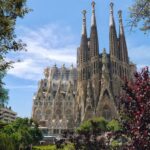 The Fascinating Facts about Barcelona's Iconic Landmark: La Sagrada Familia
The Fascinating Facts about Barcelona's Iconic Landmark: La Sagrada FamiliaIf you want to know other articles similar to The Eleventh Wonder: Exploring Barcelona's Sagrada Familia you can visit the category WHERE YOU CAN GO.
Deja una respuesta

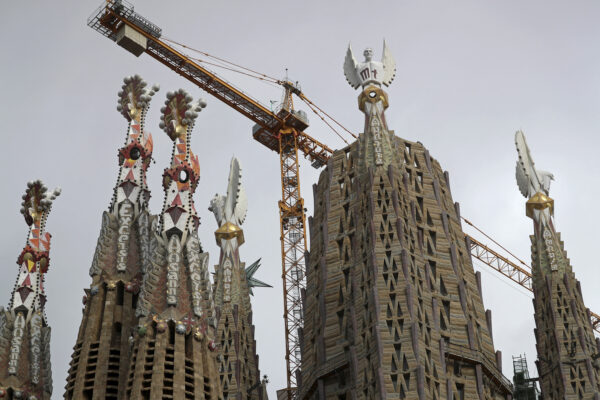
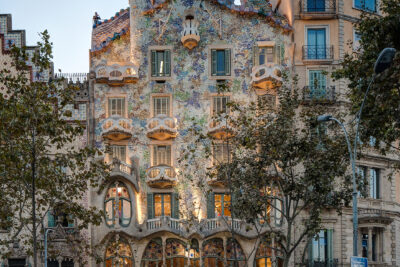
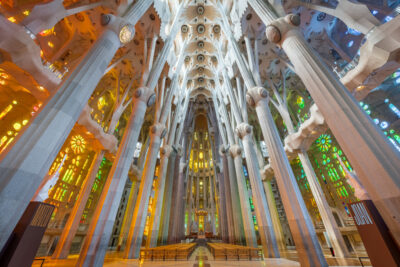
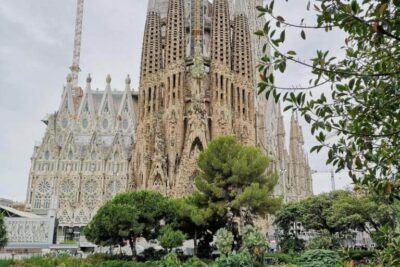
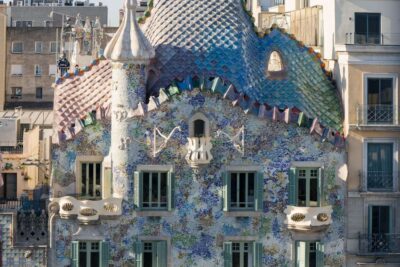
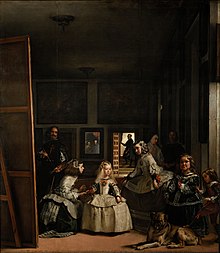
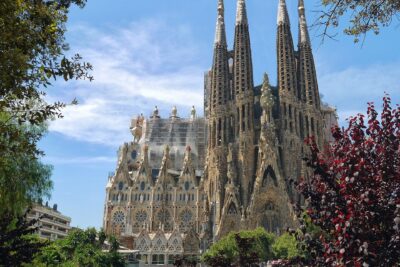
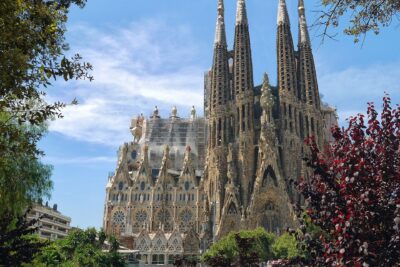
Read more!